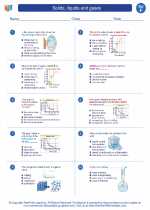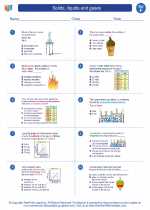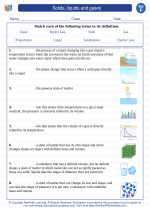Uranus
Uranus is the seventh planet from the Sun and is classified as an ice giant. It is named after the Greek god of the sky, Uranus. The planet is unique in many ways, including its rotational axis, composition, and its system of rings and moons.
Characteristics of Uranus
- Size: Uranus has a diameter of about 50,724 kilometers, making it the third-largest planet in our solar system.
- Atmosphere: The atmosphere of Uranus is composed mainly of hydrogen and helium, with traces of methane. The presence of methane gives the planet its blue-green color.
- Rotation: Uranus rotates on its side, with its axis almost parallel to its orbit around the Sun. This unique orientation results in extreme seasonal variations on the planet.
- Rings: Uranus has a system of 13 faint rings, which were first discovered in 1977. These rings are made up of dark particles, and some of them are believed to be only a few meters wide.
- Moons: Uranus has 27 known moons, with the five largest ones being Miranda, Ariel, Umbriel, Titania, and Oberon.
Study Guide
- What is the distance of Uranus from the Sun?
- What gives Uranus its blue-green color?
- Describe the rotational axis of Uranus.
- How many rings does Uranus have, and when were they first discovered?
- Name the five largest moons of Uranus.
[Uranus] Related Worksheets and Study Guides:
.◂Science Worksheets and Study Guides Sixth Grade. Solids, liquids and gases
Study Guide Solids, liquids and gases
Solids, liquids and gases  Activity Lesson
Activity Lesson Solids, Liquids & Gases
Solids, Liquids & Gases  Worksheet/Answer key
Worksheet/Answer key Solids, liquids and gases
Solids, liquids and gases  Worksheet/Answer key
Worksheet/Answer key Solids, liquids and gases
Solids, liquids and gases  Worksheet/Answer key
Worksheet/Answer key Solids, liquids and gases
Solids, liquids and gases  Vocabulary/Answer key
Vocabulary/Answer key Solids, liquids and gases
Solids, liquids and gases  Vocabulary/Answer key
Vocabulary/Answer key Solids, liquids and gases
Solids, liquids and gases 

 Activity Lesson
Activity Lesson
 Worksheet/Answer key
Worksheet/Answer key
 Worksheet/Answer key
Worksheet/Answer key
 Worksheet/Answer key
Worksheet/Answer key
 Vocabulary/Answer key
Vocabulary/Answer key
 Vocabulary/Answer key
Vocabulary/Answer key

The resources above cover the following skills:
PHYSICAL SCIENCE
Energy
Students who demonstrate understanding can:
Plan an investigation to determine the relationships among the energy transferred, the type of matter, the mass, and the change in the average kinetic energy of the particles as measured by the temperature of the sample.